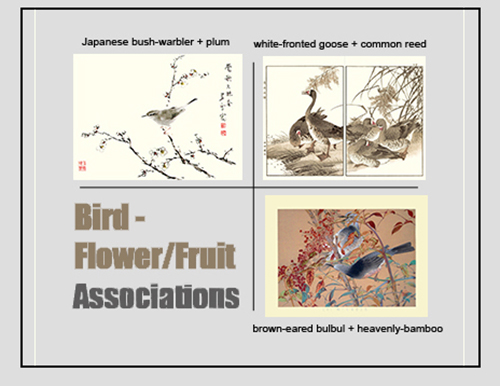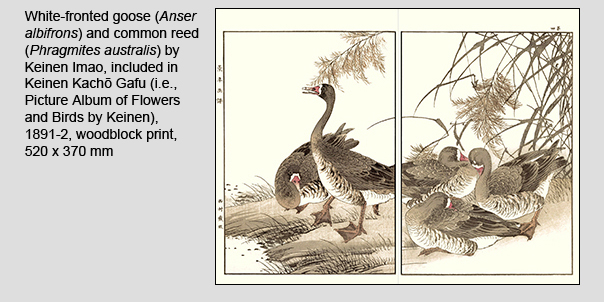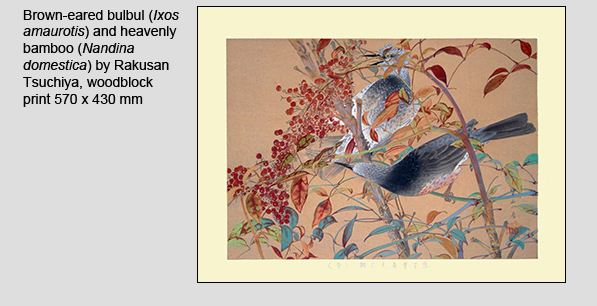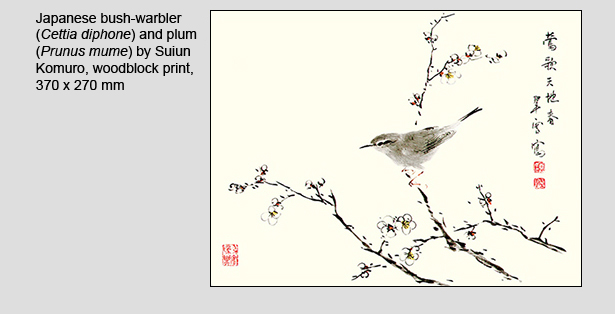Reader Collection > Blog > Bird-Flower/Fruit Associations |
||
 |
||
In Japanese art a bird is sometimes paired with a particular type of flower or fruit. The basis for this bird-flower/fruit association is either the bird's habitat preference or its food preference or its symbolic meaning. An example of each of these three types of bird-flower/fruit associations is presented below. |
||
 |
||
Food Preference |
||
 |
||
Symbolic Meaning |
||
 |
||